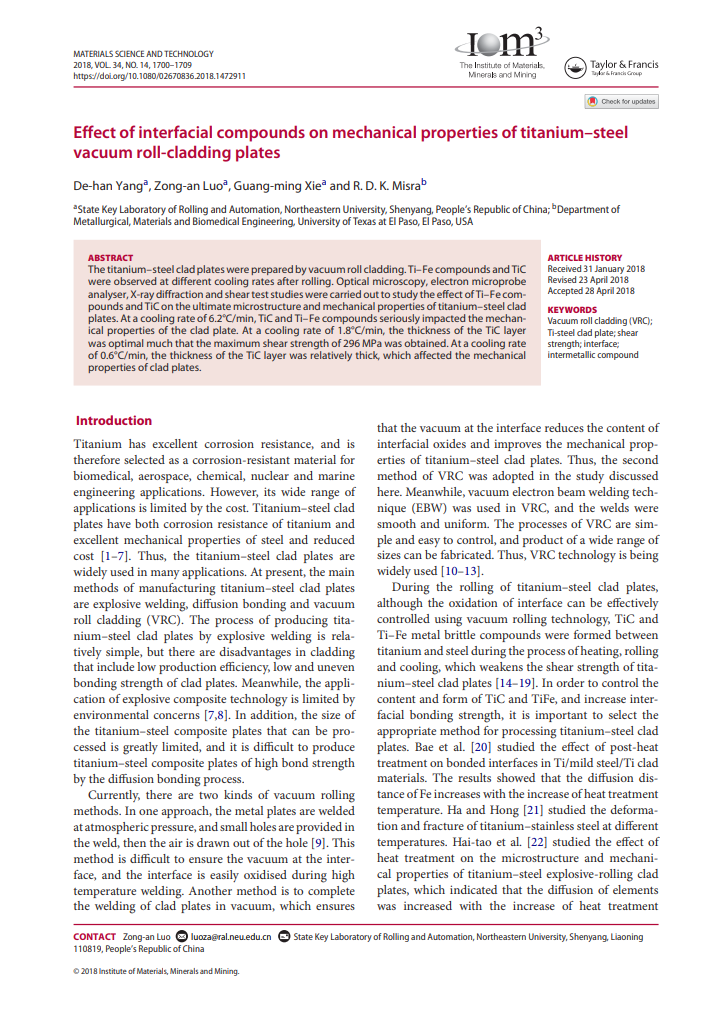The titanium–steel clad plates were prepared by vacuum roll cladding. Ti–Fe compounds and TiC were observed at different cooling rates after rolling. Optical microscopy, electron microprobe analyser, X-ray diffraction and shear test studies were carried out to study the effect of Ti–Fe compounds and TiC on the ultimate microstructure and mechanical properties of titanium–steel clad plates. At a cooling rate of 6.2°C/min, TiC and Ti–Fe compounds seriously impacted the mechanical properties of the clad plate. At a cooling rate of 1.8°C/min, the thickness of the TiC layer was optimal much that the maximum shear strength of 296 MPa was obtained. At a cooling rate of 0.6°C/min, the thickness of the TiC layer was relatively thick, which affected the mechanical properties of clad plates.
